An Dinh Palace – the “Century-Old Gem” of the ancient capital Hue, exudes a timeless beauty, aged by time, yet still preserving the grand cultural, historical, and architectural values of the Nguyen Dynasty. Today, it remains a popular attraction for both domestic and international visitors. Join Hue Transfer Service’s to admire the unique Asian-European style of one of the most luxurious palaces in Hue!
Where is An Dinh Palace?
- Address: 97 Phan Dinh Phung, Ward 8, Hue City
Recognized by UNESCO as a World Cultural Heritage site, An Dinh Palace in Hue is a magnificent and unique architectural structure closely linked to the lives of the last two kings of the Nguyen Dynasty: King Khai Dinh and King Bao Dai.
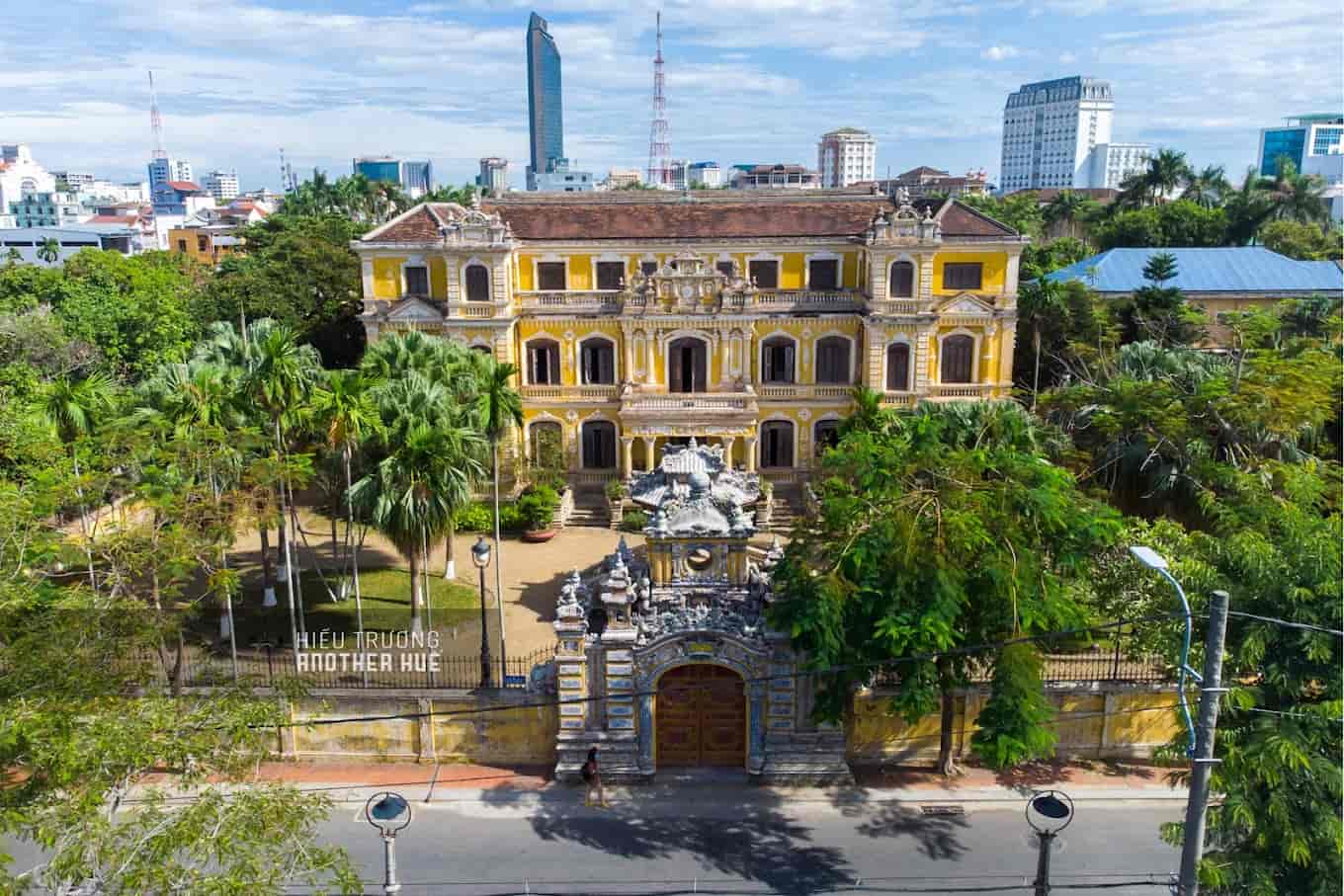
Located right on the banks of the An Cuu River, An Dinh Palace stands majestically with its brilliant yellow color. Originally, the palace consisted of 10 structures, including the main gate, Khai Tuong Pavilion, Trung Lap Pavilion, a boat landing, the Cuu Tu Dai theater, an animal enclosure, a pond, and more. However, due to the ravages of time, only three main structures remain today: the main gate, Khai Tuong Pavilion, and Trung Lap Pavilion. Despite this, the architectural and historical values of the palace remain intact.
An Dinh Palace Hue Entrance Fee and Opening Hours
Opening Hours:
- Summer: 6:30 AM – 5:30 PM
- Winter: 7:00 AM – 5:00 PM
Ticket Prices:
- Adults: 30,000 VND/ticket
- Children: Free
For detailed information on entrance fees to various attractions in Hue, please check out the article: Entrance Fees for Attractions in Hue 2024 | Updated Admission Prices.
Directions to An Dinh Palace
How to Get to Hue
If you are living in or traveling through central provinces of Vietnam, you can easily reach Hue by motorbike, bus, or private car. Most international tourists are usually in Da Nang or Hoi An, and if you wish to visit An Dinh Palace, you can book a day trip from Da Nang to Hue or Da Nang To Hue by private car through HueTransferService.com.
If you are starting from Ho Chi Minh City, Hanoi, or other southern or northern provinces, you will need to travel by train or plane. Flying is the most convenient and time-saving option. If you know how to hunt for deals, you can find flights at very reasonable prices.
How to Get to An Dinh Palace
Once you arrive in Hue, you can choose to rent a motorbike or take a taxi to visit An Dinh Palace and other landmarks of the ancient capital. A motorbike offers more flexibility and freedom in your travels, while a taxi is a suitable option if you are traveling with family or a large group. For those using private car services in Hue from HueTransferService.com, the driver will take you directly to An Dinh Palace and other locations in Hue.
An Dinh Palace is only about 2-3 km from the center of Hue City. If you start from Trang Tien Bridge, follow Hung Vuong Street straight, then turn right at the intersection onto Phan Dinh Phung Street. After a short distance, you will see the sign for “An Dinh Palace.” You can find parking outside or at the palace’s parking area and then enter to explore.
History of An Dinh Palace
In the 13th year of Emperor Thanh Thai’s reign (1901), Crown Prince Nguyen Phuc Buu Dao (later known as Emperor Khai Dinh) decided to establish his own residence, naming it An Dinh Residence, which means “a place where good fortune begins.” After officially ascending the throne in 1917, Emperor Khai Dinh used his personal funds to renovate the residence in a modern architectural style. After two years, the construction was completed, and it was then known as An Dinh Palace.
In 1922, according to Emperor Khai Dinh’s wishes, the palace was granted to Crown Prince Vinh Thuy, who would later become Emperor Bao Dai. After ascending the throne, he lived there with his family and experienced many significant historical events.
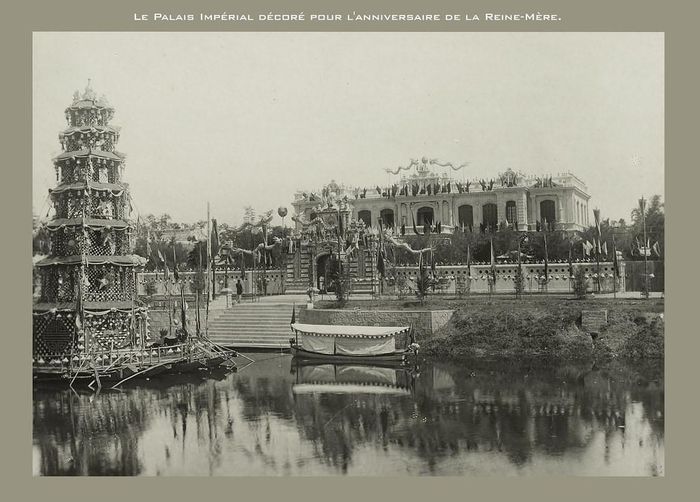
After the August Revolution of 1945, with the decline of the Nguyen Dynasty, Emperor Bao Dai’s family moved from the Imperial Palace to An Dinh Palace for a short period before relocating abroad. Only the emperor’s mother, Madam Tu Cung, remained at the palace until 1949.
In 1954, An Dinh Palace was confiscated by the Ngo Dinh Diem government. Later, in 1975, Madam Tu Cung decided to hand over the entire palace to the revolutionary government. During this period, An Dinh Palace was used as a shared housing complex for university professors in Hue and served various other purposes.
Despite enduring many historical milestones, An Dinh Palace still stands magnificently and has become an unmissable landmark when visiting the ancient capital of Hue.
Exploring the Unique Architecture of An Dinh Palace
The Unique Fusion of Asian and European Architecture
An Dinh Palace is situated on flat terrain, covering a total area of 23,463 square meters, surrounded by walls that are 0.5 meters thick and 1.8 meters high. The palace features a dominant yellow color, symbolizing royalty, and is built in the style of a European castle, with French-style arched windows and Roman-style columns. Interspersed with these are intricately carved Eastern decorative elements, such as the Four Seasons, the Four Sacred Animals, and the Eight Precious Objects. This is truly a masterpiece of architecture, harmoniously and uniquely blending Asian and European styles, representing the neo-classical architectural phase in Vietnam, standing out among the many relics within the Complex of Hue Monuments.
The Main Gate
The main gate of An Dinh Palace faces the An Cuu River and is a two-story structure built in the traditional Tam Quan style (a triple-gate style common in Vietnamese architecture). The surrounding details are adorned with meticulously crafted ceramic mosaics, reflecting Vietnam’s traditional craftsmanship. The top of the upper story is decorated with a large pearl symbol.
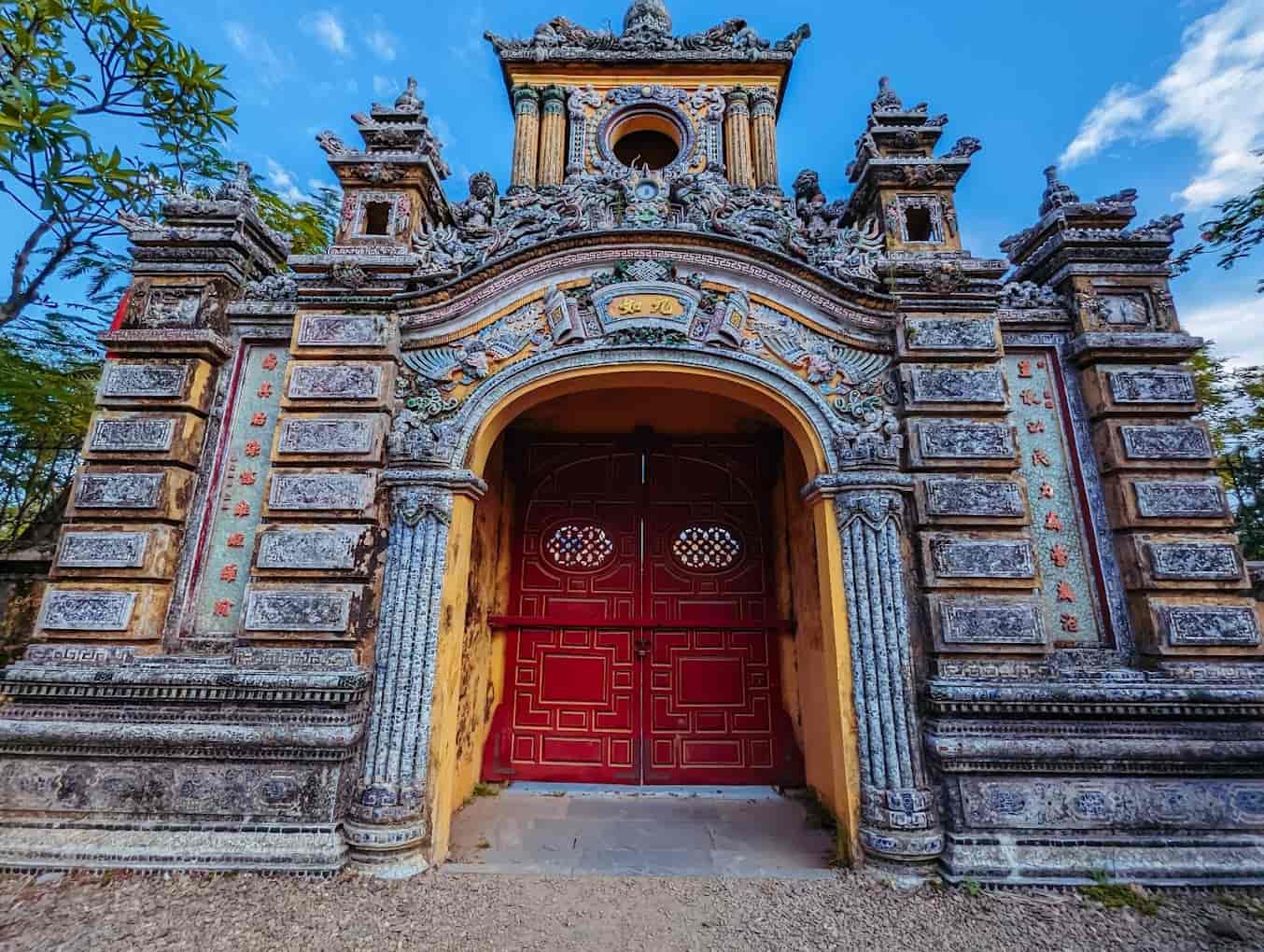
Trung Lap Pavilion
As you enter the main gate, the first structure you will encounter is the Trung Lap Pavilion. This octagonal structure is elevated above the ground with a roof designed in the style of a traditional Vietnamese tower. The roof is divided into two layers: the lower layer with eight sides and the upper layer with four sides. The highlight of the pavilion is the bronze statue of Emperor Khai Dinh, placed at the center. The statue was cast in 1920, with proportions perfectly measured to match the emperor’s actual size. Every detail of the statue is intricately and meticulously crafted.
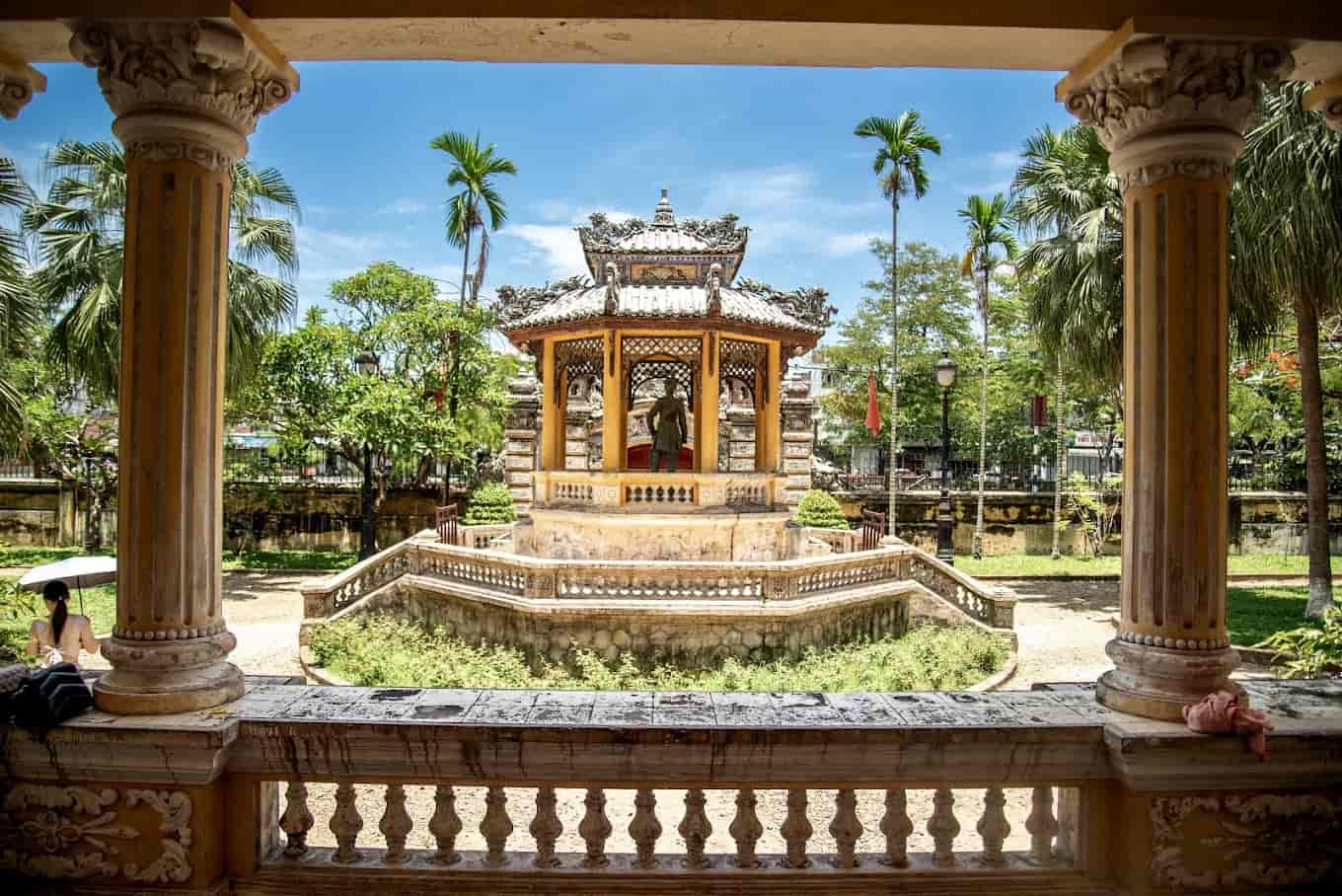
Khai Tuong Pavilion
The most prominent architectural structure at An Dinh Palace is the Khai Tuong Pavilion. Upon entering, you will be overwhelmed by the grandeur and splendor reminiscent of the golden age of the Nguyen Dynasty. The pavilion has a total area of 745 square meters, with three floors and 22 rooms.
The first floor consists of seven rooms, lavishly decorated, with the grand hall being the most notable, where highly artistic paintings are displayed. Among them are six special oil-painted murals, framed with gold-plated wooden carvings of plum blossoms and lotus leaves. These murals are painted with Western perspective techniques, combined with the meticulous depiction of Eastern art, illustrating the mausoleums of the Nguyen Dynasty kings: Gia Long, Minh Mang, Thieu Tri, Tu Duc, and Dong Khanh.

In addition to these six murals, the grand hall also houses several other paintings that are nearly 100 years old, vividly capturing the transitional period between traditional and modern Vietnamese art in the early 20th century.
The second floor consists of eight rooms, and the third floor has seven rooms, which were once the living quarters of Emperor Bao Dai’s family and Dowager Empress Tu Cung. Currently, these rooms are used as places of worship.
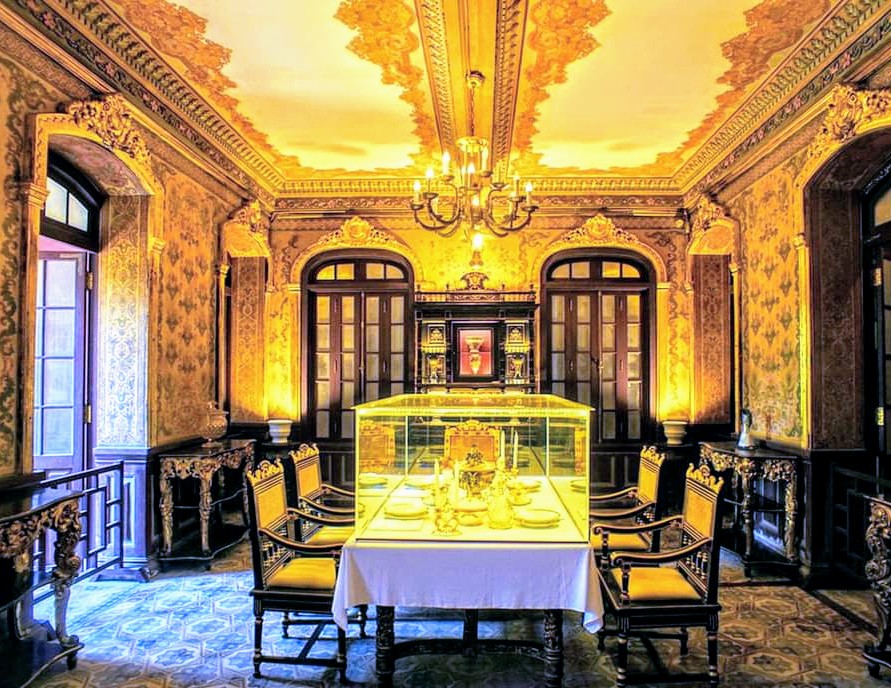
The Story of Empress Nam Phuong
When exploring the history of An Dinh Palace in Hue, you’ll discover that this landmark is associated with several members of the Nguyen Dynasty royalty, including Emperor Khai Dinh, Emperor Bao Dai, and particularly Empress Nam Phuong.
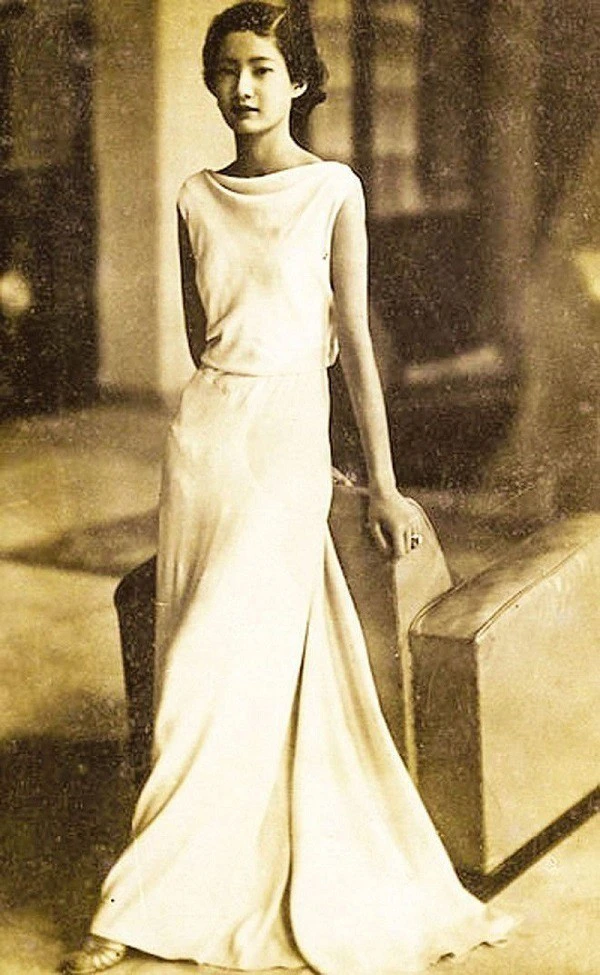
Empress Nam Phuong, born Nguyen Huu Thi Lan, was renowned in An Nam (Vietnam) for her elegant beauty and rare kindness. After marrying Emperor Bao Dai, she ascended to the role of empress. However, her marriage was fraught with difficulties due to the emperor’s other relationships. Despite this, she chose to remain silent and devoted herself to caring for her children in the palace. In 1947, she moved to France with her children and spent the remainder of her life there before passing away.
Explore Nearby Attractions Around An Dinh Palace
In addition to An Dinh Palace in Hue, there are several fascinating historical sites and scenic spots in the area that you definitely should not miss:
- Imperial City of Hue (Dai Noi Hue): A UNESCO World Heritage site, the Imperial City is a vast complex of palaces, temples, walls, and gates that served as the political and cultural center of the Nguyen Dynasty. Its impressive architecture and historical significance make it a must-visit landmark.
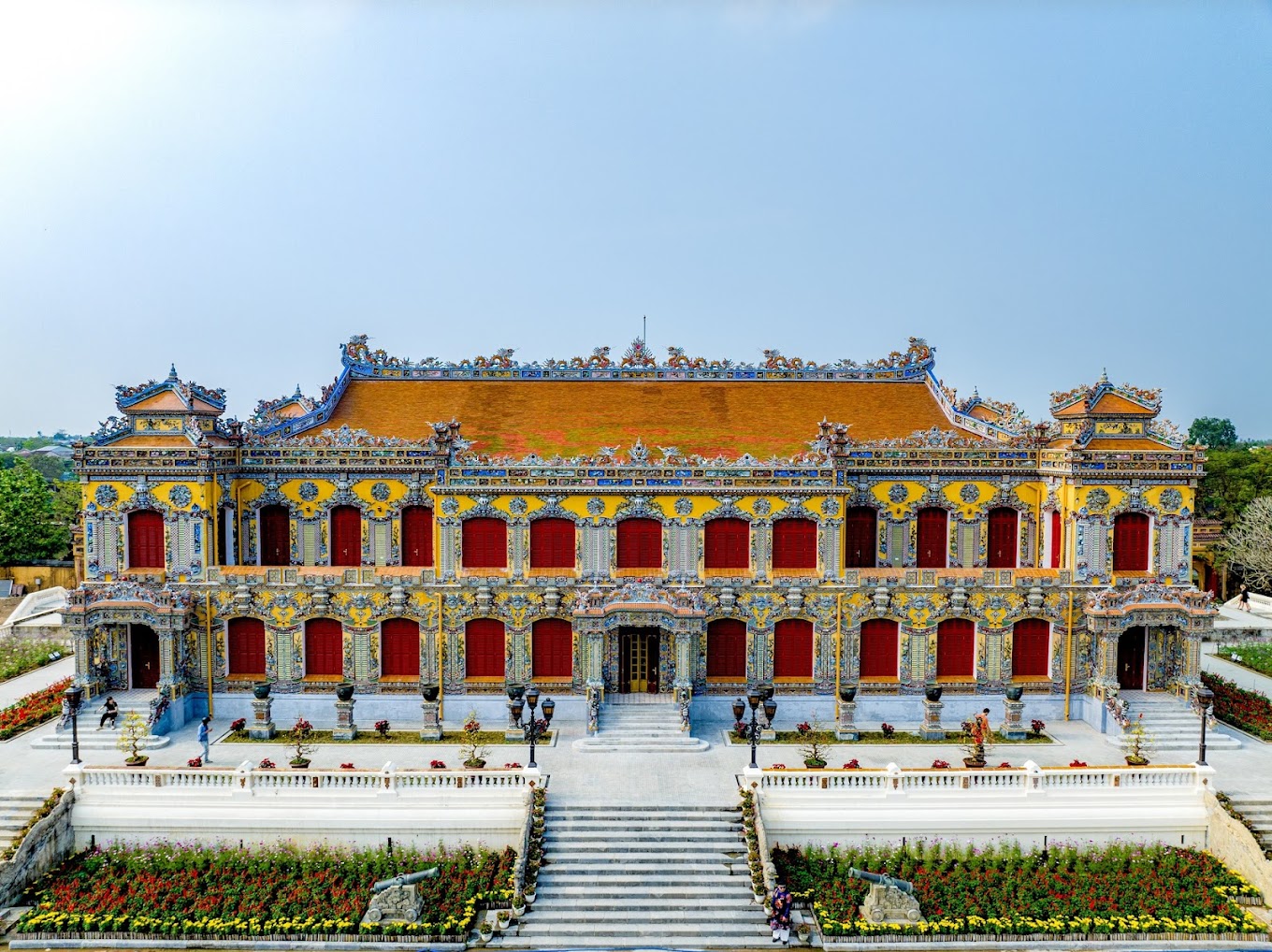
- Hue Backpacker Area: Known for its vibrant atmosphere, this area is a popular destination for travelers. It offers a variety of dining, shopping, and entertainment options, making it a great place to experience local culture and meet fellow travelers.
- Dien Tho Palace: Located within the Imperial City, Dien Tho Palace was the residence of the Empress Mother and is known for its beautifully preserved architecture and tranquil gardens. The palace provides insight into the lives of the Nguyen royalty.
- Thai Hoa Palace: Another significant part of the Imperial City, Thai Hoa Palace was the site of important ceremonies and coronations. Its grand hall, adorned with intricate decorations and historical artifacts, reflects the opulence of the Nguyen Dynasty.
- Tu Dam Pagoda: A historic Buddhist temple located in the heart of Hue, Tu Dam Pagoda is renowned for its serene atmosphere and beautiful architecture. It is an important spiritual site and offers a peaceful retreat from the bustling city.
Important Notes for Visiting An Dinh Palace
To ensure a memorable visit to An Dinh Palace, please keep the following points in mind:
- Check the weather forecast carefully and choose a sunny day for your visit.
- Dress appropriately and modestly. If possible, opt for traditional attire such as the ao dai or nhat binh to capture stunning and fitting photos.
- Maintain cleanliness by not littering in the palace grounds.
- Avoid touching or moving artifacts inside the palace without permission.
Conclusion
An Dinh Palace in Hue is designed with impressive architecture that intertwines Eastern and Western artistry while retaining a distinctly Vietnamese character. Its serene, ancient atmosphere, combined with refreshing natural surroundings, has made it a popular destination for both domestic and international visitors. HueTransferService.com wishes you a pleasant and safe trip to An Dinh Palace and Hue.

